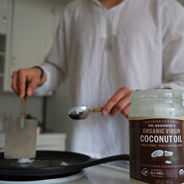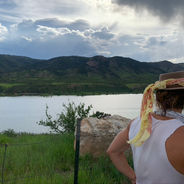Healthy Soil Feeds the Soul
- Christian Van Camp

- Jul 24, 2020
- 3 min read
Permaculture farming is an art that brings together the planet and the people. It is a structured design system centered on holistic principles seen in natural ecosystems. Monoculture, on the other hand, is sprouting a plethora of unintended consequences...

Permaculture enhances all biological systems. It’s a simple way of utilizing all available resources efficiently and productively—it’s all about organic sustainability & self-sufficiency. I like to think of permaculture as a symbiotic relationship between nature (plants/animals) and humans. For example, we can cultivate a diverse array of plant species in nutrient-rich soil, quench them with an abundant water supply, then provide these plants with warming sunshine. After this TLC time passes, the plants directly give back to us humans and the ecosystem. Plants provide us with sacred forms of life—food, shelter and comfort. That’s why it blows my mind that less than 1% of farms in the US are organic; we would rather be wasteful and harmful. Regardless, permaculture becomes a win-win situation for all beings.
Why Permaculture is ‘Good’:
Polyculture practice: permaculture tries to look more like nature by having several types of plants together at the same time
Sustainable for many years to come
People can come together as a community
Organically grown food medicines
Compost and recycling prevents waste and pollution
Immediate yield and future growth
Organic fertilizers and sustainable nitrogen fixation for soil
Why Permaculture is ‘Bad’:
Farmers think it costs too much
Goes against the grain of traditional agricultural practices
Conflicts with people’s rights
Might have less demand: organic tends to be more expensive
Can be expensive to start off
You can argue that all agricultural practices are enacting symbiosis (or a win-win), but there are varying levels to this. Most of the standard farming techniques today are immensely harming the planet. For instance, think about those thousands upon thousands of acres of corn when you go on your next road trip through the midwest. Notice how there is only corn. Notice how each of those corn crops are exactly the same height, same form, same color-- same everything. This is the backbone of GMO monocropping or monoculture, the most destructive practice our food supply has to offer.

Monocropping is the agricultural practice of growing a single crop year after year on the same land, in the absence of rotation through other crops or growing multiple crops on the same land, which is known as polyculture (greenmatters.com). This really f*cks up the precious soil’s integrity and quality. Due to the weakness of the soil (after annual monocropping, year-after-year) it is then unable to support healthy plant growth. This causes a domino effect of issues to the soil structure. It brings the nutrition content so low that farmers are forced to use toxic chemical fertilizers and pesticides to encourage plant growth and fruit production. Corn, soybean, cotton, canola, sunflower, sugar beets, apples, wheat, alfalfa and summer squash are some of these common foods with these ‘mono’ (one/same) genetic traits.
For farmers and gardeners, planting monoculture crops may seem like the easiest and most efficient method, but this is far from the truth, We need to dig deeper. In reality, the adverse effects of monocropping can lead to a massive pile of issues down the road, especially for sweet mother earth.
Why Monoculture is ‘Good’:
Economic advantage: more affordable for farmers and cheaper production
Increased production rates
Why Monoculture is ‘Bad’:
Depletes soil: lack of widespread nutrients and biological organisms (“dead” soil)
Most crops are non-organic, GMO and sprayed heavily
Potential for production loss: same genes = same health risks and susceptibilities (Half of our 300 million farmed acres are planted with corn and soy-- where’s the plant diversity?)
Erosion rates increase: more soil loss
How can you help?
Cut back on your consumption of cheap, conventional meat (non grass-fed/finished) and shitty processed foods that most of our corn, wheat and soy goes into. Opt for organic, non-GMO when possible and shop local. Love your Co-Op and the Earth will love you back.Look in your pantry and see if you can help solve the problem. It all starts with the individual.
If you are worried about monocrops like I am, you can help support permaculture and sustainable living more through programs like WWOOF (Worldwide Opportunities on Organic Farms). WWOOF is part of a worldwide effort to link visitors with organic farmers, promote an educational exchange, and build a global community conscious of ecological farming practices. Visitors, or ‘WWOOFers’, spend about half of each day helping out on a farm, learn about organic agriculture, and receive free room and board during their visit. I spent an entire month living on a permaculture-based farm in Ukiah, California learning all about the basics to sustainable, symbiotic living with nature. I have to say, this venture completely opened-up new gates to farming that I will cherish and utilize in my own practice forever. Always remember: it all goes back to working with nature, not working off of it.

































Comments